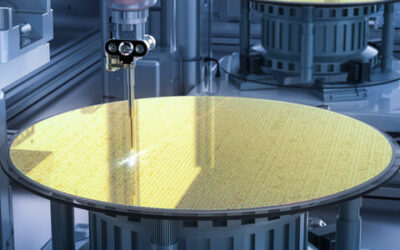[dsm_gradient_text gradient_text="Your AI Ready for the Future? Inside the New AI Maturity Model" _builder_version="4.27.0" _module_preset="default" header_font="Questrial|||on|||||" header_text_align="center" header_letter_spacing="5px" filter_hue_rotate="100deg"...
In-Depth Analysis of QMS and DAS in Aerospace Engineering
The aerospace sector operates under stringent safety and quality mandates, necessitating robust frameworks to ensure product reliability and regulatory compliance. Central to these frameworks are the Quality Management System (QMS) and the Design Assurance System (DAS). This comprehensive analysis delves into the intricate relationship between QMS and DAS, emphasizing the pivotal role of the AS9100 standard in harmonizing quality practices across the aerospace industry. Drawing from a plethora of academic sources, industry standards, and practical implementations, this document elucidates the evolution, implementation, and symbiotic integration of QMS and DAS within aerospace organizations.

The aerospace industry is synonymous with precision, safety, and innovation. To uphold these attributes, organizations must implement rigorous systems that ensure every facet of design, production, and maintenance meets exacting standards. Central to this endeavor are the Quality Management System (QMS) and the Design Assurance System (DAS). While QMS provides a structured framework for managing quality across all organizational processes, DAS focuses specifically on ensuring that design processes and outputs meet safety and regulatory requirements. The AS9100 standard serves as a pivotal benchmark, harmonizing quality practices and facilitating compliance across the aerospace sector.
Evolution of Quality Management in Aerospace
From MIL-Q-9858A to AS9100
The journey of quality management in aerospace has been marked by progressive refinements to address the industry’s unique challenges. Initially, the U.S. military’s MIL-Q-9858A Quality Program Requirements and MIL-I-45208A Inspection System Requirements set the foundation for supplier quality and inspection programs. However, with the adoption of ISO 9001 by the U.S. government, these military-specific standards were withdrawn, prompting aerospace companies to seek a more tailored quality framework. This led to the development of AS9000, which incorporated ISO 9001 requirements alongside aerospace-specific needs. Recognizing the global nature of the aerospace industry, AS9100 was subsequently introduced in 1999, providing a unified international standard that integrates ISO 9001 with additional aerospace requirements.
The Role of ISO 9001 in Shaping Aerospace Standards
ISO 9001 has been instrumental in establishing a universal foundation for quality management systems. Its process-based approach emphasizes customer satisfaction, continuous improvement, and the systematic management of organizational processes. AS9100 builds upon this foundation, incorporating all ISO 9001 requirements and augmenting them with additional criteria specific to the aerospace sector, such as risk management, configuration control, and product safety.
%
Small Businesses in AS9100 Certifications
Approximately 96% of companies holding AS9100 series certifications have fewer than 500 employees, highlighting the substantial role of small businesses in the aerospace sector. Source: Simpleque
%
Failure Attribution to Design Processes
A significant percentage of failures and anomalies in space programs during the implementation phase are attributed to errors originating in the design process. Source: The Aerospace Corporation
AS9100: The Cornerstone of Aerospace Quality
Structure and Key Components
AS9100 is structured to align with ISO 9001, facilitating seamless integration for organizations already compliant with ISO standards. Key components of AS9100 include:
- Scope: Defines the applicability of the standard to aviation, space, and defense organizations.
- Normative References: Lists foundational documents, primarily ISO 9001, that underpin AS9100 requirements.
- Terms and Definitions: Clarifies terminology specific to the aerospace industry.
- Context of the Organization: Requires organizations to understand internal and external factors that can impact their quality objectives.
- Leadership: Emphasizes top management’s role in establishing a quality policy, setting objectives, and promoting a culture of continuous improvement.
- Planning: Focuses on addressing risks and opportunities, setting quality objectives, and planning changes effectively.
- Support: Covers resources, competence, awareness, communication, and documented information necessary for the QMS.
- Operation: Details requirements for operational planning and control, including design and development, production, and service provision.
- Performance Evaluation: Mandates monitoring, measurement, analysis, evaluation, internal audits, and management reviews to assess QMS performance.
- Improvement: Addresses nonconformity and corrective actions, continual improvement, and innovation.
Revisions and Their Implications
AS9100 has undergone several revisions to remain aligned with evolving industry needs:
- Revision A (2001): Introduced to align with ISO 9001:2000, incorporating a process-based approach and emphasizing customer satisfaction.
- Revision B (2004): Focused on clarifying requirements and improving compatibility with ISO 9001:2000.
- Revision C (2009): Enhanced focus on risk management, project management, and configuration management to address industry concerns about product safety and conformity.
- AS9100 Revision D (2016): The update of AS9100 from revision C to D includes the full text of ISO 9001:2015. In addition to aligning the structure of the aviation, space and defense requirements to the new structure of ISO 9001:2015
In AS91000 Revision D the following key changes were implemented:
- Product Safety was added in a new clause and in other areas.
- Counterfeit Parts Prevention was added in a new clause and in other areas (this was already in place in the AS9110 and AS9120 standards).
- Risk clause was merged with the new ISO 9001 risk requirements along with an increased emphasis on risks in operational processes.
- Awareness clause was added with reinforced requirements for awareness of individual contribution to product and service quality and safety along with ethical behavior.
- Human Factors are included as a consideration in nonconformity management and corrective action.
- Configuration Management was clarified and improved to address stakeholder needs.
Design Assurance System (DAS) in Aerospace
Definition and Objectives
The Design Assurance System (DAS) is a structured framework within aerospace organizations aimed at ensuring that design processes and outputs meet all applicable safety, regulatory, and performance requirements. The primary objectives of DAS include:
- Regulatory Compliance: Ensuring designs adhere to all relevant aviation regulations and standards.
- Safety Assurance: Identifying and mitigating potential design-related hazards to ensure product safety.
- Quality Assurance: Maintaining high-quality design outputs that meet or exceed customer expectations.
Core Functions and Responsibilities
DAS encompasses several critical functions to achieve its objectives:
- Design Planning: Establishing comprehensive design plans that outline objectives, resources, timelines, and verification and validation activities.
- Requirements Management: Ensuring all design requirements are clearly defined, documented, and traceable throughout the design process.
- Design Verification and Validation: Implementing activities to confirm that design outputs meet the specified requirements and intended use.
- Configuration Management: Controlling design data and changes to maintain the integrity and traceability of design configurations.
- Risk Management: Identifying, assessing, and mitigating risks associated with design activities to enhance safety and performance.
The Design Assurance System (DAS) constitutes a fundamental component within aerospace organizations, ensuring the integrity, reliability, and regulatory compliance of the design process. Given the complexity and safety-critical nature of aerospace products, the DAS serves not merely as a quality checkpoint but as a comprehensive, systematic framework designed to manage risks, validate design outputs, and maintain airworthiness standards throughout the product life cycle.
Definition and Purpose of DAS
The DAS is a structured system composed of defined responsibilities, processes, procedures, and allocated resources tasked with ensuring that design outputs meet stringent airworthiness, regulatory, and customer requirements. Its primary function is to establish a controlled environment where design changes, compliance demonstrations, and certification processes are executed methodically and transparently.
European Aviation Safety Agency (EASA) Part 21 Subpart J and the Federal Aviation Administration (FAA) Design Organization Approval (DOA) guidelines define the necessity of DAS for any organization engaged in the design of products, parts, or appliances requiring airworthiness certification. Specifically, Part 21.A.239 mandates the design organization to establish and maintain a DAS capable of controlling and supervising design activities, including design changes and certification deliverables.
The objectives of the DAS extend beyond regulatory compliance; it aims to:
- Prevent design-induced failures that could compromise safety
- Ensure that all design deliverables adhere to the applicable certification basis
- Facilitate the integration of multidisciplinary design teams and suppliers
- Provide traceability and documentation for all design decisions and verifications
- Enable continuous improvement through lessons learned and system monitoring
Core Functional Components of DAS
The Design Assurance System is inherently multi-faceted, encompassing several interdependent functions that collectively ensure the robustness of the aerospace design process. These core components include:
1. Design Function
The design function is the engine of the DAS, responsible for generating and controlling design data, including specifications, drawings, design reports, and analysis. This function must ensure that all designs comply with airworthiness requirements, environmental protection regulations, and contractual obligations.
Design engineers operate within a controlled environment where requirements are clearly captured, decomposed into technical specifications, and iteratively refined. Verification and validation (V&V) activities are embedded into the process to ensure that the design intent is fulfilled and that any assumptions or potential hazards are addressed early in the lifecycle.
2. Airworthiness and Certification Function
This function focuses on interfacing with regulatory authorities and ensuring that every aspect of the design meets the prescribed certification criteria. Certification engineers lead the development of compliance checklists, mapping each regulation to specific design evidence.
Key responsibilities include:
- Managing the Type Certification (TC) or Supplemental Type Certification (STC) process
- Coordinating test plans, compliance demonstrations, and analysis reports
- Ensuring that the product meets environmental protection requirements (e.g., noise, emissions)
- Supporting continued airworthiness activities, such as service bulletins and airworthiness directives
3. Independent Monitoring and Verification Function
To avoid conflict of interest and maintain objectivity, the DAS incorporates an independent checking function. This involves personnel or teams not directly involved in creating design data verifying the compliance demonstration packages, test results, and certification reports.
This verification role is critical in ensuring:
- Integrity and correctness of design deliverables
- Adequate mitigation of identified risks
- That all required documentation is complete, accurate, and compliant with procedures
This independent monitoring extends to audits, process reviews, and conformity inspections, feeding back into the design process for corrective action and continuous improvement.
4. Configuration and Change Management
Aerospace designs are rarely static; they evolve due to technological advancements, material availability, customer requests, and regulatory changes. Therefore, robust configuration and change management processes are embedded within the DAS to ensure that:
- All design changes are assessed for safety, performance, and compliance impacts
- Change proposals undergo rigorous multi-disciplinary reviews
- Configuration status accounting is maintained for traceability
- Baseline designs are clearly defined, documented, and protected
Regulatory Interfaces and Compliance Documentation
The DAS framework ensures a transparent and documented pathway from design concept to certified product. This is critical for interfacing with regulatory bodies such as EASA, FAA, and other national aviation authorities (NAAs).
Key compliance documentation generated under DAS includes:
- Compliance checklists mapping design outputs to specific regulations
- Certification plans detailing the means of compliance (MoC)
- Test plans and reports
- Design and analysis reports
- Safety assessments and risk mitigation plans
These documents collectively form the certification dossier required to achieve Design Organization Approval (DOA) and Type Certification (TC).
Continuous Improvement and Lessons Learned
Finally, DAS is not a static system but a dynamic framework that evolves based on lessons learned, feedback from service operations, and technological advancements. Post-certification monitoring, incident investigations, and in-service experience are continuously fed back into the design assurance process, enabling future designs to benefit from operational insights.
Structured continuous improvement initiatives within DAS may include:
- Root cause analysis of design issues or failures
- Process audits and corrective action programs
- Regular updates to design standards and procedures
- Training programs to enhance design competencies
In summary, the Design Assurance System (DAS) in aerospace engineering is an essential, multi-layered framework that ensures design integrity, compliance, and safety across the entire product lifecycle. It is a regulatory requirement, a business necessity, and a moral obligation in an industry where human lives depend on flawless execution.
By integrating robust risk management, rigorous verification, and continuous improvement practices, the DAS not only satisfies certification authorities but also enhances the organization’s design maturity, innovation capacity, and market competitiveness. As the aerospace sector evolves with new materials, digital technologies, and increasingly complex systems, the DAS will remain a cornerstone in safeguarding airworthiness and advancing the frontiers of aviation and space exploration.
Integrating QMS and DAS: A Strategic Approach
Benefits of Integration
Integrating QMS and DAS offers several strategic advantages:
Enhanced Compliance: Streamlined processes ensure adherence to both quality and design assurance requirements, reducing the risk of non-compliance.
Improved Efficiency: Elimination of redundant processes leads to more efficient operations and resource utilization.
Holistic Risk Management: A unified approach to risk management addresses both quality and design-related risks comprehensively.
Continuous Improvement: Integrated systems facilitate a culture of continuous improvement across all organizational processes.
Challenges and Mitigation Strategies
While integration offers numerous benefits, organizations may encounter challenges such as:
Cultural Resistance: Employees may resist changes due to entrenched practices. Mitigation: Implement comprehensive change management strategies, including training and clear communication of benefits.
Complexity in Implementation: Aligning diverse processes and systems can be complex. Mitigation: Adopt a phased implementation approach with continuous monitoring and feedback mechanisms.
The Role of Risk Management in QMS and DAS
Identifying and Assessing Risks
Both systems require a proactive approach to risk identification and assessment. This involves analyzing potential internal and external factors that could impact quality and design integrity.
Mitigation Strategies and Monitoring
Implementing effective risk mitigation strategies, coupled with continuous monitoring, ensures that identified risks are managed appropriately, minimizing their potential impact.
Risk Management within DAS
Given the potentially catastrophic consequences of design failures in aerospace, risk management is central to the DAS. Risk assessment is not a discrete activity but a continuous process applied at every stage of design development.
Methodologies such as Failure Mode and Effects Analysis (FMEA), Fault Tree Analysis (FTA), and hazard analysis are employed to identify potential failure points, evaluate their consequences, and implement mitigation strategies. Design reviews are structured to assess residual risks and ensure that the product’s risk profile remains within acceptable limits throughout its lifecycle.
Additionally, new challenges such as the integration of Artificial Intelligence (AI) and Machine Learning (ML) components into flight-critical systems necessitate the evolution of risk assessment frameworks. NASA and other leading bodies are already exploring new standards and assurance methodologies to address the unique risks associated with AI-driven systems.
Supplier Quality Management: Extending QMS and DAS Beyond Organizational Boundaries
Supplier Evaluation and Selection
Robust evaluation and selection processes ensure that suppliers meet defined quality and design assurance criteria, aligning with organizational standards.
Performance Monitoring and Improvement
Continuous monitoring of supplier performance, coupled with collaborative improvement initiatives, enhances the overall quality and reliability of the supply chain.
Supplier and Subcontractor Design Assurance
The DAS extends beyond internal activities, incorporating the oversight of design work performed by suppliers and subcontractors. In an era where complex systems are often developed collaboratively across global supply chains, ensuring consistent design assurance practices among partners is non-negotiable.
DAS requirements for suppliers include:
- Pre-qualification audits and capability assessments
- Flow-down of applicable design assurance and airworthiness requirements
- Monitoring of supplier design activities through periodic reviews and audits
- Integration of supplier design data into the overall design configuration
Subcontracted designs must be subjected to the same scrutiny and independent verification processes as in-house designs, ensuring full traceability and accountability.
The Future of QMS and DAS in Aerospace
The aerospace industry is on the cusp of transformative changes driven by technological advancements, evolving regulatory landscapes, and shifting market demands. Quality Management Systems (QMS) and Design Assurance Systems (DAS) must adapt to these changes to ensure continued safety, efficiency, and competitiveness.
Industry 4.0 and Digital Transformation
The integration of digital technologies, often referred to as Industry 4.0, is revolutionizing aerospace manufacturing and operations. Key aspects include:
Digital Twin Technology: Creating virtual models of aircraft and aerospace systems allows manufacturers to predict performance issues and streamline the design process. This proactive approach enhances both quality and efficiency.
Smart Manufacturing: The adoption of the Internet of Things (IoT) and automation optimizes production efficiency and reduces costs. IoT-enabled sensors provide real-time data from connected devices across the supply chain, ensuring faster detection of quality deviations and enhancing traceability.
Artificial Intelligence (AI) Integration: AI-powered insights facilitate predictive analytics and proactive quality control measures. Machine learning algorithms help identify patterns and anomalies in production processes, allowing for immediate corrective actions and minimizing defects.
Sustainability and Environmental Considerations
As environmental concerns grow, aerospace companies are increasingly focusing on sustainable practices in production and design. Integrating Environmental, Social, and Governance (ESG) metrics into QMS platforms enables organizations to track sustainability efforts, monitor environmental impact, and adhere to ethical sourcing policies. This integration ensures compliance with regulatory requirements and demonstrates a commitment to sustainability.
Enhanced Cybersecurity Measures
With the increasing reliance on digital and cloud-based QMS platforms, ensuring data security is paramount. Future QMS providers are focusing on robust cybersecurity measures, such as advanced encryption, AI-powered threat detection, and strict compliance with global data privacy regulations like GDPR and ISO 27001.
Regulatory Evolution and Standardization
The regulatory landscape is adapting to address emerging technologies and methodologies:
- Updated Standards: Revisions to standards like ARP4754B emphasize the importance of functional safety and design assurance processes, ensuring that development practices keep pace with technological advancements.
- Global Harmonization: Efforts to harmonize standards across international borders aim to streamline certification processes and reduce redundancies, facilitating smoother global operations for aerospace companies.
Integration of Advanced Technologies in DAS
The Design Assurance System is evolving to incorporate advanced technologies:
Artificial Intelligence and Machine Learning: The integration of AI into DAS presents challenges and opportunities. Ensuring the safety of AI-driven systems requires new verification frameworks and safety assurance methodologies. NASA’s research into certifying learning-based safety-critical aviation systems highlights the need for both design-time and run-time assurance of AI components.
Advanced Simulation Techniques: The use of high-fidelity simulations in the design and testing phases allows for more rigorous validation of complex systems, reducing reliance on physical prototypes and accelerating the development process.
Focus on Non-Conformance Management
Effective non-conformance management is crucial in maintaining the integrity, reliability, and safety of aerospace products and services. By continuously improving processes, leveraging technology, and fostering a culture of excellence and continuous learning, organizations can ensure the safety, reliability, and competitiveness of their products and services in the aerospace industry.
Supply Chain Integrity
Ensuring the integrity of the aerospace supply chain is critical:
Preventing Unapproved Parts: Implementing measures to prevent unapproved parts from entering the supply chain is essential for maintaining safety and compliance. Strengthening vendor accreditation, digitizing documents, and improving part traceability are among the recommended steps to enhance supply chain integrity.
Continuous Improvement and Adaptability
The future of QMS and DAS in aerospace hinges on the ability to adapt to changing technologies, regulations, and market demands. Embracing a culture of continuous improvement, investing in employee training, and fostering collaboration across departments will be essential for organizations to thrive in this dynamic environment.
Conclusion
The aerospace industry stands at a pivotal juncture, where embracing technological advancements, sustainability, and robust quality management practices will define its trajectory. The integration of advanced technologies into QMS and DAS, coupled with a steadfast commitment to safety and continuous improvement, will ensure that aerospace organizations not only meet regulatory requirements but also set new benchmarks for excellence in a rapidly evolving landscape.
References
- Ideagen, 2024. The importance of non-conformance management in aerospace.
- AST Forge Tech, 2023. 7 Emerging Aerospace Technology Trends.
- ComplianceQuest, 2024. The Future of Quality Management Systems: Trends for 2025.
- SITAL Technology, 2024. Design Assurance Level A (DAL-A): Ensuring Top-Notch Aircraft Safety.
- Deloitte Insights, 2024. 2025 Aerospace and Defense Industry Outlook.
- The Aerospace Corporation, 2009. Design Assurance Guide.
- Aerospace Industries Association, 2022. The Future of Aerospace Standardization.
- RFgen., 2024. Exploring the Aerospace Supply Chain and Manufacturing Advancements
- QMII, 2024. The Future of Aerospace Quality Management with AS9100 Rev D
Wanna know more? Let's dive in!
Cooling the Future: How AI Makes Data Centers Greener
[dsm_gradient_text gradient_text="Cooling the Future: How AI Makes Data Centers Greener" _builder_version="4.27.0" _module_preset="default" header_font="Questrial|||on|||||" header_text_align="center" header_letter_spacing="5px" filter_hue_rotate="100deg"...
When Cars Became Code: How AI is Redefining Automotive Production
[dsm_gradient_text gradient_text="When Cars Became Code: How AI is Redefining Automotive Production" _builder_version="4.27.0" _module_preset="default" header_font="Questrial|||on|||||" header_text_align="center" header_letter_spacing="5px" filter_hue_rotate="100deg"...
Supercharged Smarts: How AI Is Rewiring Electric Vehicle Batteries
[dsm_gradient_text gradient_text="Supercharged Smarts: How AI Is Rewiring Electric Vehicle Batteries" _builder_version="4.27.0" _module_preset="default" header_font="Questrial|||on|||||" header_text_align="center" header_letter_spacing="5px" filter_hue_rotate="100deg"...
New Zealand 2025
Duration: 2 weeks Cities: Christchurch, Hokitika, Kaikōura, Westport, Te Waipounamu, Nelson, Timaru Miles Travelled: 30 000Traveling through parts of New Zealand’s South Island offers a rich tapestry of history, landscape, and local character that leaves a quiet...
Resolving Die Peel Issues in an Automotive & Aerospace Electronics Manufacturing Plant
Background A global electronics manufacturer supplying critical components to the automotive and aerospace industries received multiple customer complaints regarding the premature failure of transistor-based power modules. Field analysis revealed that the root cause...
Transforming a Dysfunctional Quality Team in Automotive and Aerospace Manufacturing
Background The quality department of a Tier-1 manufacturer in the automotive and aerospace sectors was expected to ensure strict compliance to both customer and regulatory standards. Instead, it became a bottleneck plagued by poor collaboration, low morale, and high...
Resolving Customer Complaints Related to Electrical Connector Module Failures
Background ElectroTech, a manufacturer of electrical distribution components, including connector modules for power systems, received a major customer complaint regarding intermittent connection failures in one of its core electric product lines. The failures led to...
Singapore 2019
Duration: 3 days Cities: Singapore Miles Travelled: 6,300Visiting Singapore was like stepping into the future while still being surrounded by rich history and culture. From the moment I arrived at Changi Airport, with its indoor waterfalls and lush gardens, I knew...
Hawaii 2015
Duration: 2 weeks Cities: Honolulu Miles Travelled: 7,000Our trip to Hawaii was truly a once-in-a-lifetime experience, filled with breathtaking landscapes, warm hospitality, and unforgettable moments. We stayed in Honolulu on the island of Oahu, where the vibrant mix...
North East England 2024
Duration: 2 weeks Cities: Durham, Beamish Miles Travelled: 200Traveling to North East England offers a unique blend of history, culture, and character that stays with you long after you leave. One of the highlights is the enchanting city of Durham. Its cobbled streets...
Japan 2019
Duration: 2 weeks Cities: Osaka, Tokyo, Hiroshima, Kyoto Miles Travelled: 9,000Japan in spring is pure magic. Spring felt like a moment suspended in time. The cherry blossoms were at their peak, casting a soft pink glow over temple roofs and narrow cobblestone lanes....












